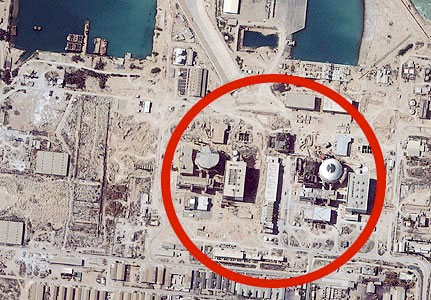
Japan has experienced three vast explosions in its earthquake and tsunami-hit nuclear power plant facilities in four days. The tsunami was triggered by a series of 8.8-magnitude earthquakes and after-shakes in the Pacific Ocean near the cost of Japan. The incident destroyed the cooling system of the nuclear power plants in the coastal area, which led to overheating of the nuclear reactors and subsequent explosions, as the engineers were unable to bring down the temperature inside the reactors.
According to reports obtained by BBC’s Environment correspondent, Richard Black, the suppression chamber of the reactors – which is a large doughnut-shaped construction below the reactor housing – may have cracked as a result of the explosion, allowing radioactive materials to escape into the atmosphere.
The Japanese government has warned that the radiation from the Fukushima Daiichi nuclear plant has reached levels harmful to human beings. Although according to weather reports the wind is dispersing most of the radiation over the Pacific Ocean, residents living within 12 miles of the plant have been evacuated and those living within 20 miles of the plant have been urged to stay indoors. A change in wind direction will potentially render a more catastrophic outcome for the people’s health. Higher than normal radiation levels have also been detected in Japan’s capital, Tokyo, which is about 150 miles away from the epicenter of the nuclear plant explosions. Although there is no report of immediate danger in Tokyo, residents in the capital are stocking up on food supplies in case they have to remain indoors for several days.
The latest reports put the official death toll from the quake and the tsunami at about 3,400, with about 10,000 people still missing, but the health ramifications of the radiation is yet to be seen. Radiation levels of up to 400 millisieverts per hour are recorded at Fukushima Daiichi plant. According to experts, 1,000 millisieverts increases the risk of cancer by about 5%. Leukemia, lung, skin, thyroid, breast, and stomach cancers are the most common types of illnesses caused by radiation. Exposure to radiation doses, as small as 100 millisieverts, may slightly increase the risk of cancer. If the radiation reaches the levels of 4,000 to 5,000 millisieverts, potentially half of those exposed to it will die within the span of only one month.
The explosions at the nuclear reactors and subsequent increase in radiation levels have prompted concerns across the world about nuclear safety. Germany has already abandoned its planned extension of the country’s old reactors, as a direct result of the events in Japan. All reactors that were operational before 1980 will now be shot down, according to Chancellor Angela Merkel. Other European countries are stress testing their reactors. The Japanese incident is likely to affect the US’s nuclear policy, as observers increasingly call for alternative sources of energy to avoid a Japanese style catastrophe.
It is time for Iran too to revisit its nuclear ambitions. Unlike Japan, Iran is immune to devastating tsunamis, as Iran possesses no oceanfront. But like Japan, Iran has proven to be an earthquake prone country. An earthquake of a similar magnitude as experienced near the cost of Japan can potentially threaten Iran’s nuclear reactors. Furthermore, Iran’s oil and gas and other industrial sectors have historically suffered from under-investment, grave negligence, and lack of overhaul. If anything, this history raises concerns about the safety of the Iranian nuclear reactors in the long run.
Iran has oil and gas reserves for another 80 years by today’s rate of production. In the long run, the country needs alternative sources of energy, but in the short and medium term it may be better off to divert investment from nuclear programs to its oil and gas sector. Refocusing on oil and gas production and refinement instead of nuclear energy ensures the country a continued source of national income, energy self-reliance at least in the medium term (instead of importing refined petroleum), and it smoothens the country’s international standoff, while sources of energy other than fossil fuel and nuclear can be found.
AUTHOR
Hamid Karimianpour is the author of Nation Building or Democracy by Other Means, Algora Publishing, 2011, available on Amazon.com or eBook. Karimianpour studied economics and philosophy at the University of Oslo in Norway. He moved to England, where he obtained an MBA degree from the University of Hull, then did postgraduate studies in philosophy before immigrating to Virginia in 2006. Karimianpour has traveled extensively through Europe and the Middle East.






